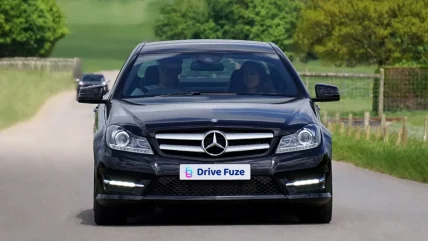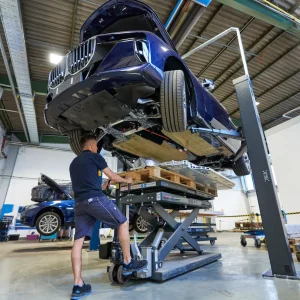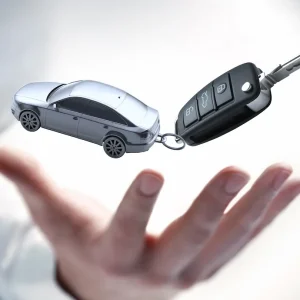
Established just over a year ago, Drive Fuze is aiming to succeed in the world of car subscription services – an industry which has seen plenty of promise, and also some high-profile setbacks. Having started out by offering its own subscription fleet to customers, Drive Fuze is now progressing to what its founders always saw as the main target for expansion – offering ‘subscription-as-a-service’ for clients such as car manufacturers, dealers, and leasing and rental companies. As COO James Birch explains, his confidence in the need for this sort of product comes from personal experience, through his previous role as managing director of leasing company Leasys, where he wanted a solution, not just for new cars entering the market, but also to potentially retain vehicles once they had completed their initial lease.
He says: “I’d been looking for a subscription provider for the three years that I was there, because this forms a part of not just people getting into new vehicles, but second and third tenure of vehicles as well, and I used to have vehicles which might have been more attractive to put out on a secondary lease or rental rather than put through to the auction or whatever it might be.
“Looking at the providers out there, there were tech solutions where you could list the vehicles, but there wasn’t really anyone with the capability to take it from cradle to grave in terms of what happens when a vehicle has an accident, has a cracked windscreen, all of these things, because there is at the end of the day a vehicle behind this whole process that requires management, moving, servicing, maintaining, as well as the system development.”
Birch explains that Drive Fuze’s own subscription fleet – which currently has around 500-600 vehicles, and is growing – was mainly developed in order to prove to potential clients that it can provide the sort of holistic service that Birch himself was previously looking for.
He says: “It’s never our intention to have the world’s biggest subscription fleet. Our fleet is just to prove concept and to test all of those scenarios so that when we go to our subscription as a service [clients] we’ve been there, done it, tested it on our own fleet, worked with all those different [management] scenarios and back-end processes, and I just think it gives us a lot more credibility than coming out with a sort of whizzy tech platform front-end without the back-end knowledge.”
CTO Richard Baker adds: “We know when we go to an organisation and talk about subscription-as-a-service, we won’t just be saying ‘Here’s how we list a vehicle’, we’ll be talking to them in depth about [topics such as] how you process a fine, or if a customer calls in and wants to change a start date for a subscription, how we do that and re-sign a contract digitally.
“Managing our own fleet has enabled us to really ensure that we’ve got smooth processes for each of the areas of subscription.”
When asked about Drive Fuze’s prospects for success in an industry which has seen some OEMs roll back on subscription plans, and providers such as Onto hit trouble, Baker says: “I think our wide product mix puts us in a good position. We’re not just focusing on EVs, we recognise that it is a big customer market out there and there are customers who, [although] some of them do want EVs, there is still a need for traditional petrol, diesel, hybrid vehicles as well. We are aiming to tap into those customers, where perhaps if we were just focused on one particular fuel type it might be a bit more challenging.”
Birch says: “When we look at the general data trends that are out there, Boston Consultancy Group are talking of figures of $30-40bn in revenue [from car subscription] by 2030 across the UK and US, Deloitte suggests $22bn for the G5 in Europe by 2025, so they’re big numbers.
“We’re seeing already a shift of some manufacturers talking about 15% of their volumes going into a subscription product. If you go into the German market they are talking about 40% by [around] 2030.
“So, all of the statistics do look as if the growth is there as people start to look for different mobility methods, potentially different ways of using a vehicle rather than owning a vehicle.” Birch does however feel that there is still a need for education about what car subscription can offer.
He says: “We have our view as to what car subscription looks like, but sometimes it’s quite difficult to compare car subscriptions, because it’s not like comparing PCH or PCP where it’s very much the same product whether you go to one leasing company or another.
“We see car subscription in its purest form – monthly rolling, all-inclusive with insurance and all of the things we’ve talked about. When you look at others, they may not come with insurance, they may have a three-month minimum term – it’s not right or wrong, but I think it’s up to us collectively to try and educate the market on what subscription is, how it can fit into the market, and what the benefits are of the product over and above maybe some of the other products that are out there.
“On the other side of the coin, our system can manage all of those different scenarios – three months, six months, whatever it might be. It’s just we’ve chosen the product we think is most pure.”
Baker explains how Drive Fuze’s system has been designed to facilitate these different approaches to subscription. He says: “We built the system quite modularly. What we understand is that you’ll have some really big organisations that will want to plug our system into various systems that they’ve got and push/pull data, and then some smaller organisations that perhaps don’t want to plug in and use some of the more fleet management-type functionality in the system. So it’s quite a flexible system.
“It fits in quite well with different IT environments which is always one of the barriers to entry with subscription-as-a-service products.”
For Birch, the ability for Drive Fuze’s system to allow a second or third lease period for a used vehicle, in line with what he wanted to see back at Leasys, is potentially crucial
to its appeal.
He says: “This is what a lot of the manufacturers are looking for. They’re not after the first three years anymore, they are after a ten-year period of really owning that customer and the data that comes with it.
“We’ve trialled used vehicles with one of the top three leasing companies and they’ve been really, really successful. We’re certainly finding in this market [with] all of the economic crisis that we’ve seen, people are coming out of almost too-cheap PCH deals that are now coming round to renew, and they’ve tripled in price.
“So, there’s certainly a route where people say actually, I will take a good quality used vehicle and still have all the wrapped-up services in terms of insurance, maintenance, servicing, roadside assistance and all of the rest of it, but pay significantly less for it. So I think in today’s market there’s a very strong place for used car subscription.”
According to Baker, initial conversations with prospective clients have backed up Drive Fuze’s confidence about its offering.
He says: “The thing I’ve been really pleased about is when we put our system in front of customers, the difference they’re talking about that they’ve seen with perhaps other systems, or their own systems that they’ve tried to develop, is because we have got that deep understanding of the whole journey, our system has got a lot of functionality in the areas they struggle with.
“We’re very advanced with a number of organisations, and have had some really positive feedback, which has reaffirmed our strategy. I’m sure some of them will develop quite quickly.”





